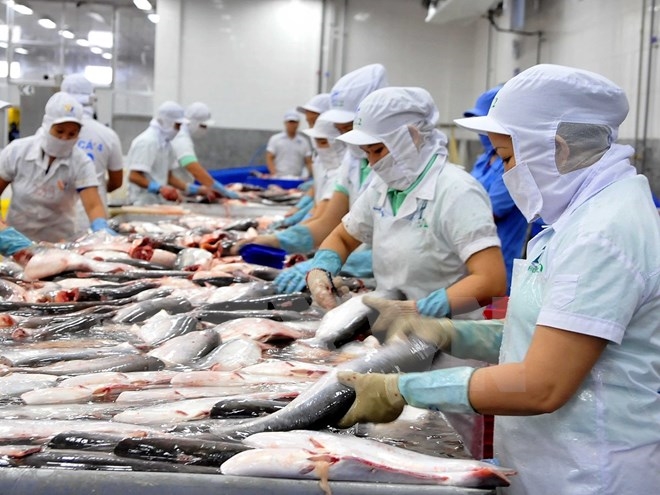 Economy
Economy

The agro-forestry-fisheries export turnover in April was estimated at US$2.97 billion.
 |
| Tra fish processing at a company in Cửu Long (Mekong) Delta Đồng Tháp Province. — VNS/VNS Photo An Hiếu |
HÀ NỘI — The agro-forestry-fisheries export turnover in April was estimated at US$2.97 billion.
This brings the figure for the first four months of this year to over $10 billion, up 11 per cent against the same period last year.
In the first four months of 2016, Việt Nam shipped 2.06 million tonnes of rice abroad and raked in $916 million, up 11.8 per cent in volume and 13.8 per cent in value.
Meanwhile, the shipping of 91,000 tonnes of cashew nuts brought home $689 million, an increase of 14.6 per cent in volume and 7.1 per cent in value.
The average export price of coffee dropped 18.3 per cent year-on-year. However, the export value of coffee in the period rose 18.2 per cent to reach $1.16 billion after the coffee export volume recorded a sharp increase of 44.6 per cent to reach 681,000 tonnes.
Germany and the United States remained the biggest coffee importers for Việt Nam.
Pepper exporters earned $569 million from shipping 70,000 tonnes of the product abroad, up 28.3 per cent in terms of volume but down 14.6 per cent in value.
The country also shipped 318,000 tonnes of rubber abroad and earned $376 million, up 29 per cent in volume and 6.6 per cent in value.
In stark contrast, the volume of cassava exports decreased by 8 per cent to 1.76 million tonnes, compared with the same period in 2015. Revenue was down 23 per cent to $447 million.
Tea exports saw a decline of 3 per cent in volume to reach 32,000 tonnes, generating $47 million, down 12.2 per cent. Exports of key forestry products reached $2.25 billion, a yearly rise of 4.3 per cent.
The value of aquatic exports for the first four months was calculated at nearly $1.97 billion, a rise of 6.3 per cent from the same period last year. The United States, Japan, China and the Republic of Korea remained Việt Nam’s largest seafood consumption markets, accounting for 51.47 per cent of the market share. — VNS




